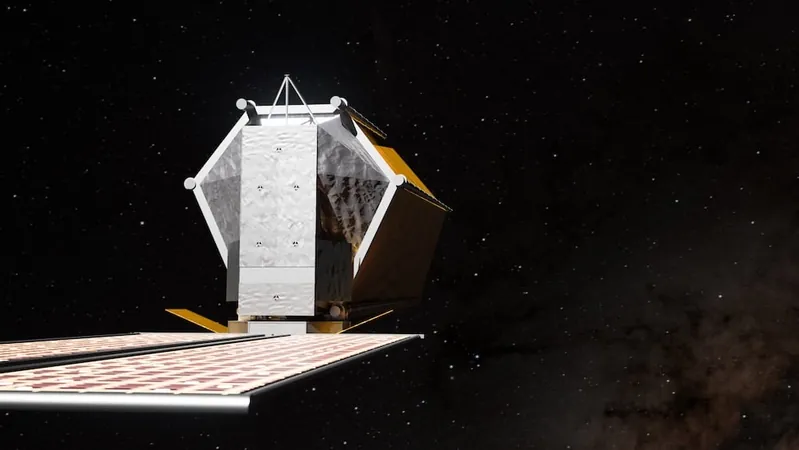
Unveiling Cosmic Secrets: NASA's Telescope Set to Decode Life's Origins
2025-07-09
Author: Liam
Unlocking the Mystery of Life's Origins
For thousands of years, humanity has been fascinated by the origins of life. Now, scientists are gearing up to unravel this enigma using NASA's groundbreaking Habitable Worlds Observatory (HWO), designed to explore planets beyond our Solar System.
A Revolutionary Approach to Detecting Life
Instead of the typical lab experiments or Martian digs, a team led by Sukrit Ranjan from the University of Arizona aims to leverage the HWO to analyze life patterns across various exoplanets. Their straightforward methodology hinges on the idea that different theories about life’s beginnings generate specific predictions regarding its location and prevalence. By observing a multitude of planets, they believe they can put these theories to the test with real-world data.
Three Theories, One Quest
The research categorizes theories on life's origins into three main camps, each presenting unique predictions: 1. **The Precise Conditions Theory**: This posits that life needs extremely specific conditions to emerge, suggesting that we might find no other life within 33 light-years of Earth. For instance, chemical pathways to life often depend on intricate interactions of multiple environments, making successful life emergence a rare occurrence. 2. **The Alkaline Vent Theory**: Advocates that life readily arises wherever basic conditions exist, specifically in areas with liquid water and alkaline hydrothermal vents. This idea implies that life will flourish on planets meeting these foundational requirements. 3. **The UV Radiation Theory**: Argues that ultraviolet light is essential for life's development, stipulating ideal conditions contingent on precise UV radiation levels.
Harnessing the HWO's Power
The true strength of the HWO lies in its ability to identify chemical markers of life in planetary atmospheres. Detecting even one biosphere could challenge the theories that claim life is exceedingly rare; conversely, finding no signs of life on 20 to 50 planets would lend credence to the rarity hypothesis.
Broadening the Horizons of Astrobiology
The research stresses the necessity of examining at least 50 exoplanets to yield substantial data for testing these theories. This revelation is pivotal for the design of the HWO, emphasizing the importance of wide-ranging surveys over in-depth studies of a select few worlds.
The HWO: A Beacon in the Search for Life
The telescope's goal is not only to detect biosignatures but also to assess planetary traits, such as the existence of oceans, continental features, and atmospheric composition. Observations will track changes in brightness as planets orbit their stars, uncovering ocean glints and continental signatures, while spectroscopic measurements will identify crucial atmospheric gases.
A Giant Leap for Astrobiology
This research represents a monumental leap in the field of astrobiology. Rather than merely questioning whether life exists elsewhere, scientists are poised to explore how it begins. The HWO is designed not just to map living worlds but to challenge longstanding theories about the emergence of life.
Implications Beyond the Laboratory
The ramifications of understanding life's origins extend well beyond scientific inquiry. Insights gained could enhance our quest for habitable worlds, inform future explorations, and ultimately provide clarity on humanity's place in the vast universe.









 Brasil (PT)
Brasil (PT)
 Canada (EN)
Canada (EN)
 Chile (ES)
Chile (ES)
 Česko (CS)
Česko (CS)
 대한민국 (KO)
대한민국 (KO)
 España (ES)
España (ES)
 France (FR)
France (FR)
 Hong Kong (EN)
Hong Kong (EN)
 Italia (IT)
Italia (IT)
 日本 (JA)
日本 (JA)
 Magyarország (HU)
Magyarország (HU)
 Norge (NO)
Norge (NO)
 Polska (PL)
Polska (PL)
 Schweiz (DE)
Schweiz (DE)
 Singapore (EN)
Singapore (EN)
 Sverige (SV)
Sverige (SV)
 Suomi (FI)
Suomi (FI)
 Türkiye (TR)
Türkiye (TR)
 الإمارات العربية المتحدة (AR)
الإمارات العربية المتحدة (AR)